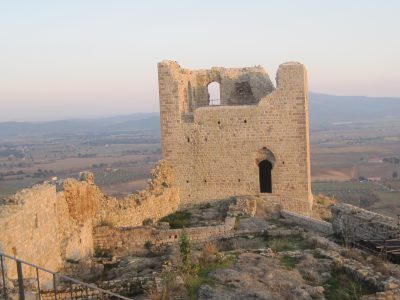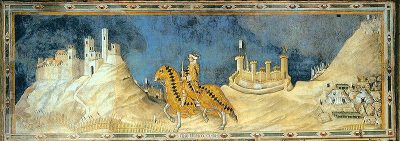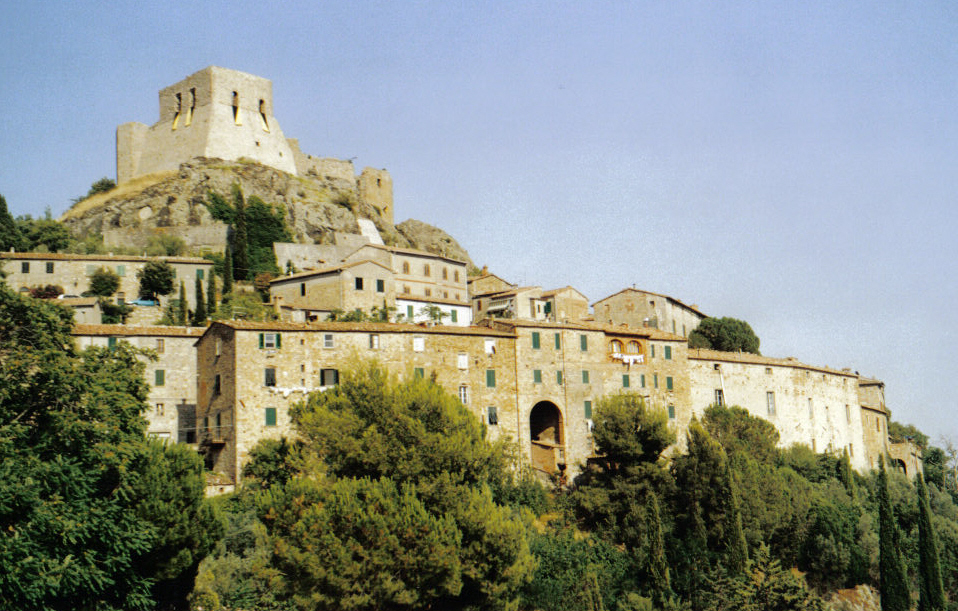Montemassi is a fraction of the Italian municipality of Roccastrada, in the province of Grosseto.
It is a suggestive medieval village located on the slopes of a hill in the south-western part of the municipality of Roccastrada, and is the border between the Metalliferous Hills and the Grosseto Maremma. The village was a fiefdom of the Aldobrandeschi family and, subsequently, passed to the Pannocchieschi family.
The Sienese succeeded in conquering and conquering Montemassi in the second half of the XIII century but, at the beginning of the XIV century, the town managed to become an autonomous center under the control and protection of the Pannocchieschi and the Cappucciani family of Sticciano.
Subsequently, it was again besieged and conquered by Guidoriccio da Fogliano on behalf of the Sienese (1328) who maintained control, however with difficulty, due to the numerous local revolts which took place in various periods and due to various interferences by some families of the countryside.
In the mid-16th century, following the definitive fall of the Republic of Siena, Montemassi became part of the Grand Duchy of Tuscany and, since then, has followed its fortunes. It was enfeoffed as a marquisate to the Malaspina di Mulazzo until 1770 when it was sold to the Cambiaso who held it until the abolition of the feuds in 1774.
Places of interest
• The church of Sant’Andrea Apostolo is a sacred building, inside are the Madonna with Child, by an artist from the circle of Matteo di Giovanni, perhaps Guidoccio Cozzarelli (last decade of the 15th century), and the Annunciation (end of the 16th century).
•The castle of Montemassi appears in the form of imposing ruins restored to their former glory, thanks to the latest restoration work.
The complex is delimited by a series of curtain walls which enclose a large fortified courtyard, overlooked by a series of buildings with arched doors and windows; in this area the remains of a cistern for the collection and distribution of water are also visible.
The most impressive buildings stand out the fortress.
A little lower than the fortress, on the opposite side of the fortified area, rises the tower, with walls covered in stone provided with some loopholes; also in this case.
•The Palazzo del Capezzolo dates back to the 16th century and consists of two bodies, the main one and an annex once used as a stable. Inside there is a characteristic courtyard. The building is privately owned.
•The walls of Montemassi constitute the defensive system. A first wall was built around the year 1000, to protect the castle village under development; over time, the defensive system was further strengthened.
The walls of Montemassi almost entirely delimit the village which develops just downstream from the imposing castle of Montemassi.

The Mystery of the Fresco
Montemassi is depicted in the famous fresco “Guidoriccio da Fogliano at the siege of Montemassi”by Simone Martini inside the Palazzo Comunale of Siena. A long controversy began in 1977, after the discovery of preparatory drawings would suggest a remake of the fifteenth century.
The attribution to Simone Martini would appear to be supported by a document from 1330, which mentions the castle of Montemassi, but does not mention an equestrian portrait of Guidoriccio.
In 1980, after restorations carried out on the wall where the famous Mappamondo which gives the room its name was located, another fresco came to light under the Guidoriccio, and the controversy flared up, involving critics, historians, technicians and experts of every subject.
The underlying fresco turned out to be of extraordinary quality and, for those who deny the authenticity of Guidoriccio, this would be the true work of Simone, who, moreover, is certain to have created other works in the room, in addition obviously to the Maestà. If then the now rediscovered scene depicts the conquest of Montemassi or another Sienese victory is cause for doubt even for those who support the authorship of Martini. Opponents mostly conclude by attributing it to Duccio di Boninsegna, and identify the episode depicted in various ways, obviously excluding the siege of Montemassi, which took place when Duccio had been dead for a decade . However, this attribution is firmly denied by Simone’s supporters, also due to the stylistic incompatibility, which they recognize, between this fresco and Duccio’s work: in particular due to the modernity of the scene, not compatible with his Byzantine style. The total loss (or non-existence) of Duccio’s frescoes and his paintings of secular subjects makes the attribution even more difficult.
In any case, this discovery has further questioned the authenticity and authorship of the traditional painting, creating more attribution alternatives.
Description
The work shows the commander of the Sienese troops, Guido Ricci on horseback, in profile, as he goes to the assault of the Castello di Montemassi in 1328. In the background, a rather realistic landscape with mountains, a camp and the localities theater of the facts.
The place has always been within the expansionist aims of the Republic of Siena but the inhabitants, even after the various submissions, have always become protagonists of revolts against Sienese rule to claim autonomy and to aspire to the recognition of the free municipality which, however, was never obtained.
The painting shows signs of repeated interventions, repainting and remaking, highlighted even more by the conservative restoration carried out by Giuseppe Gavazzi in 1980.




